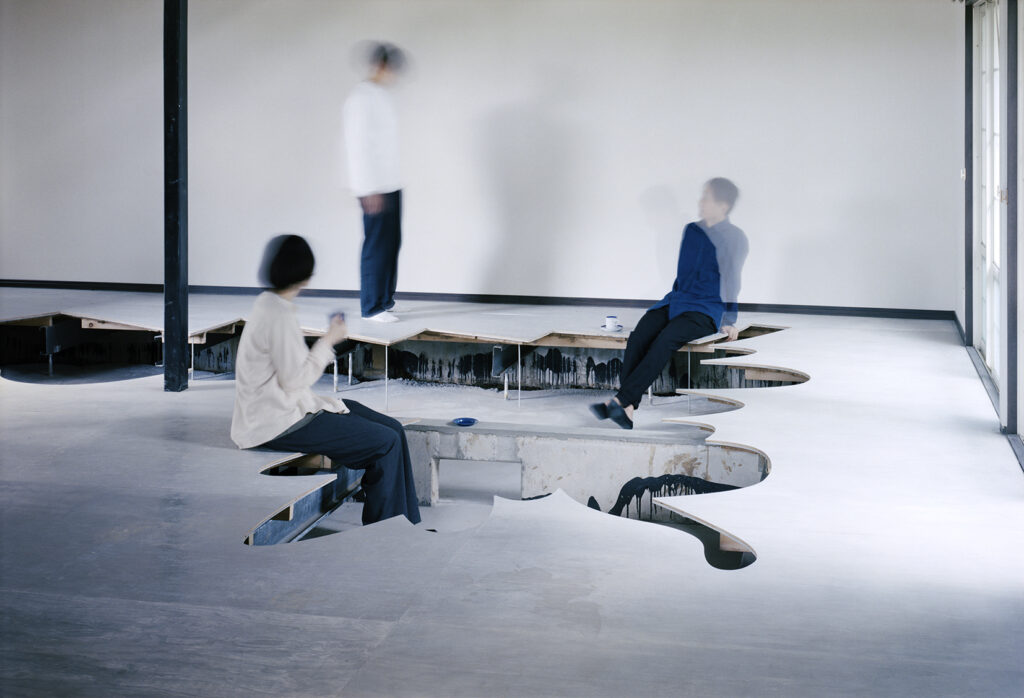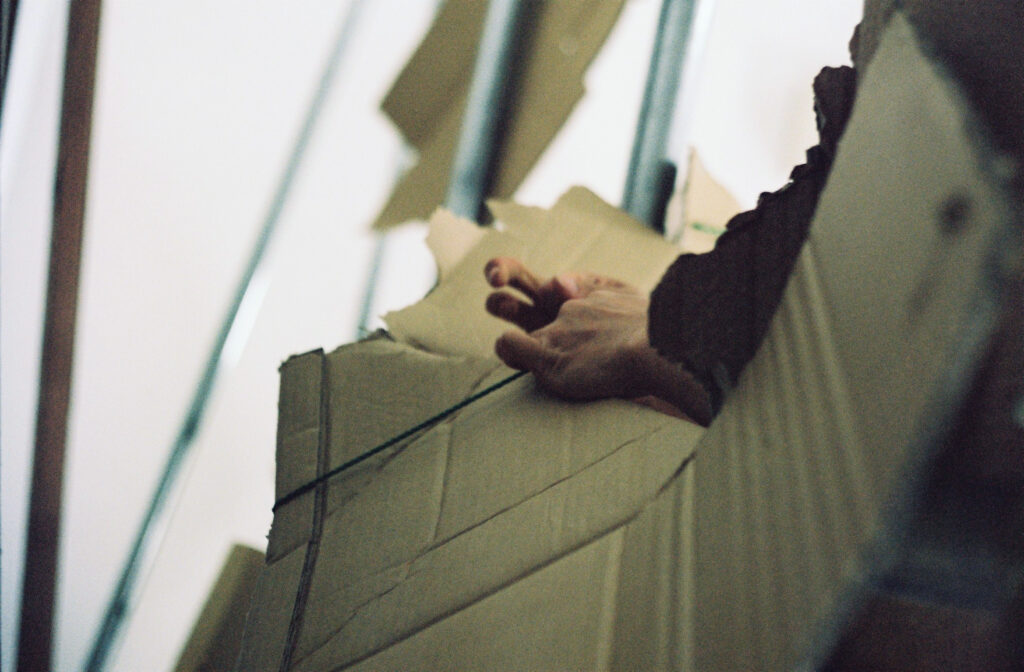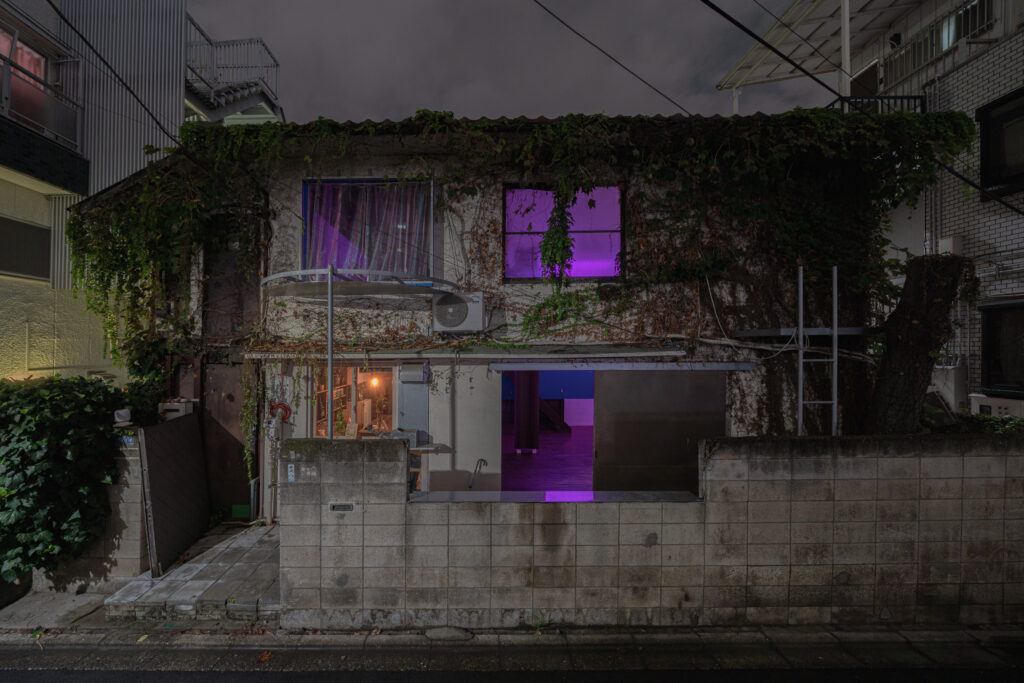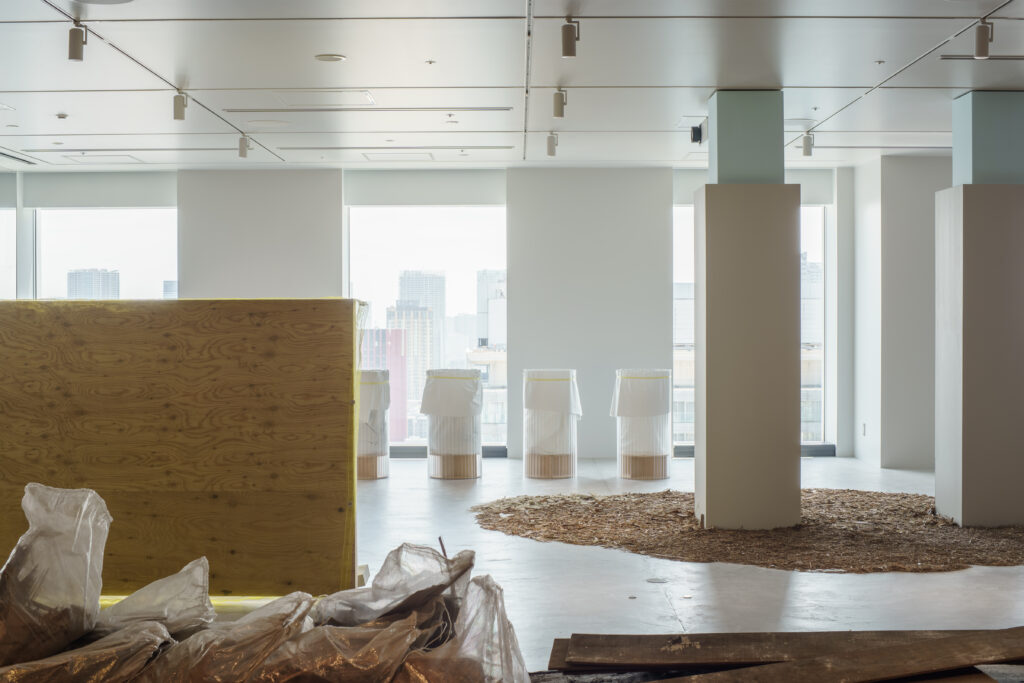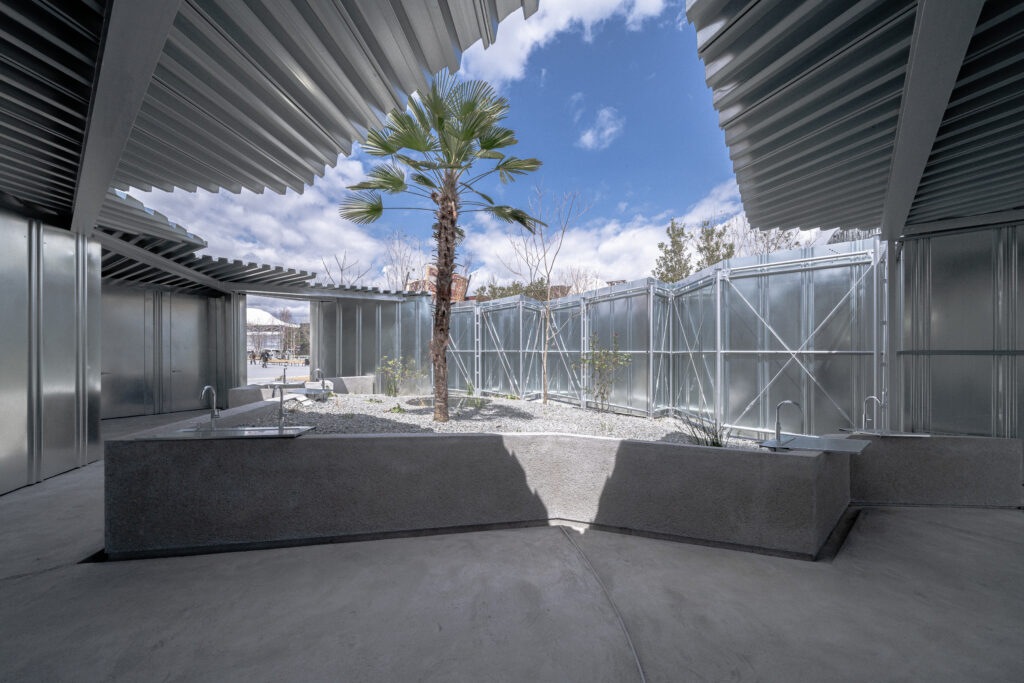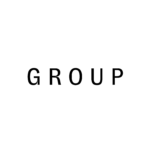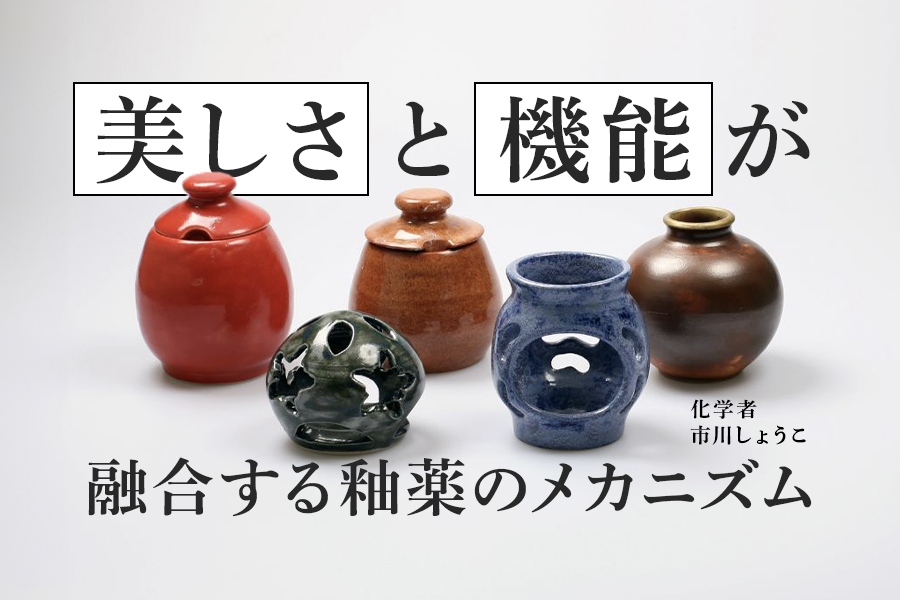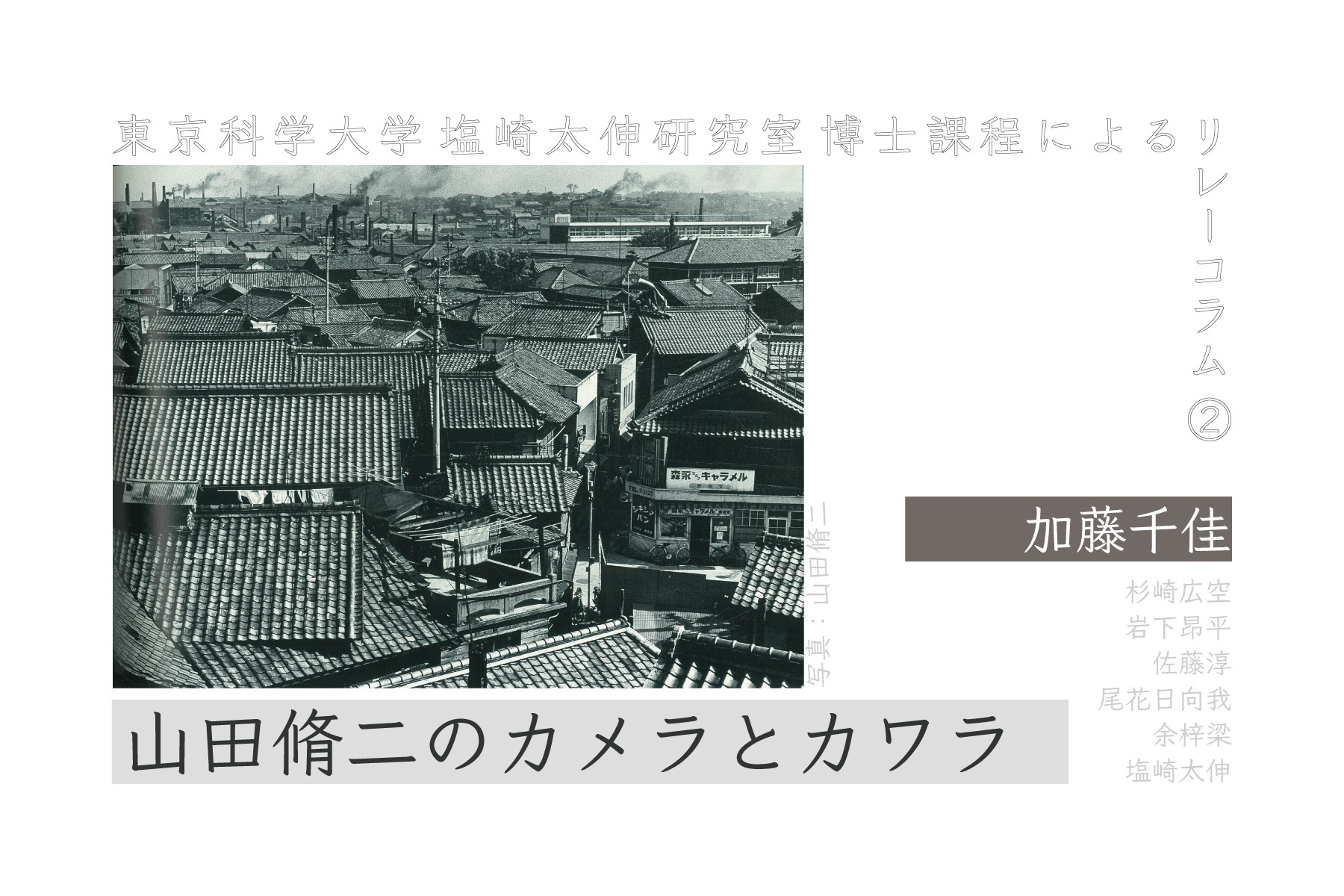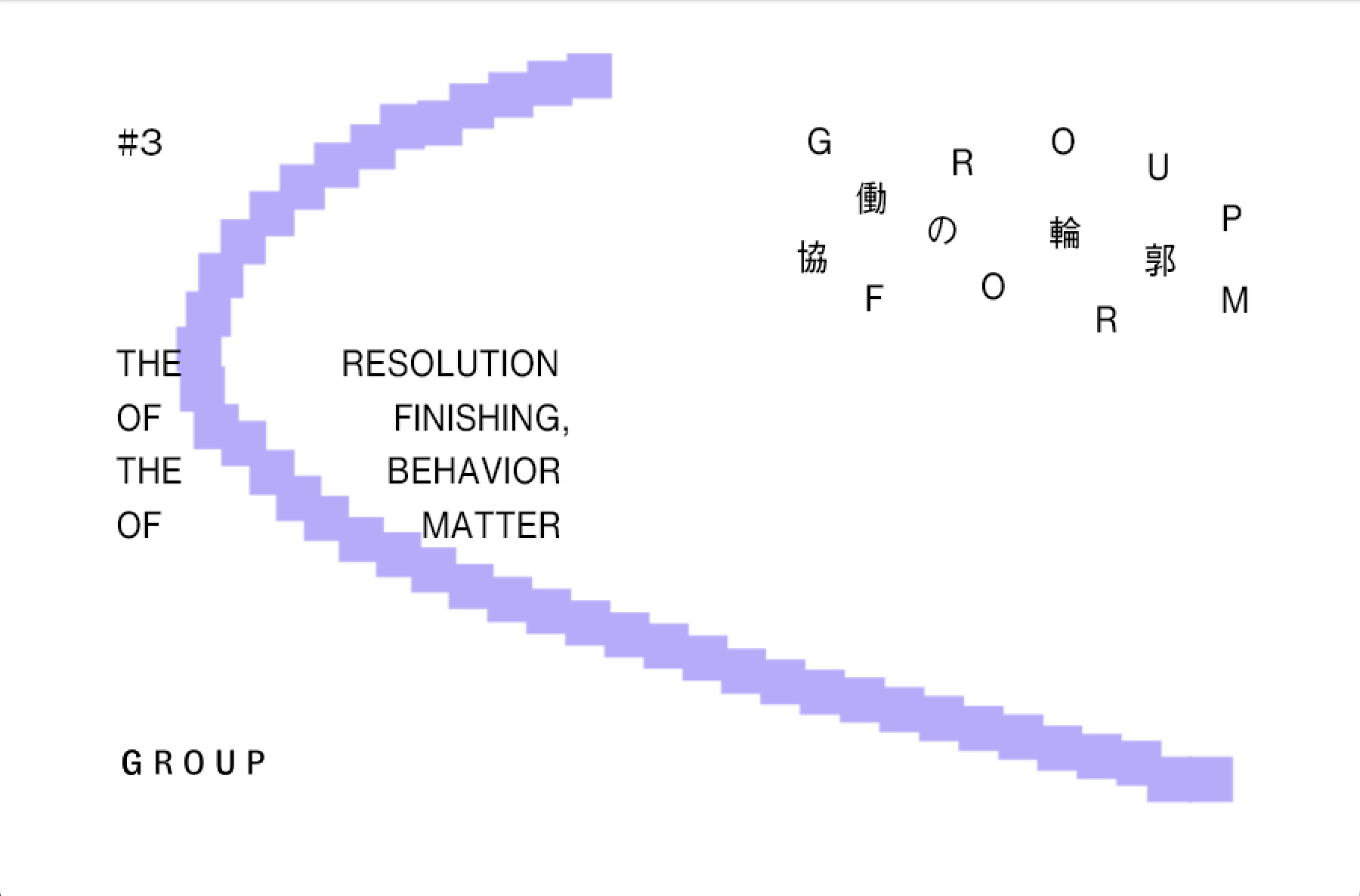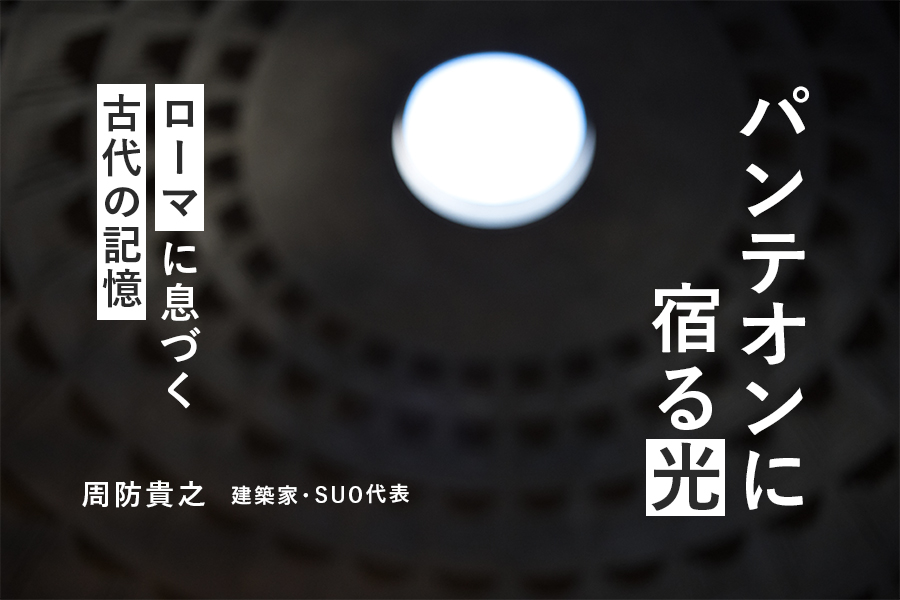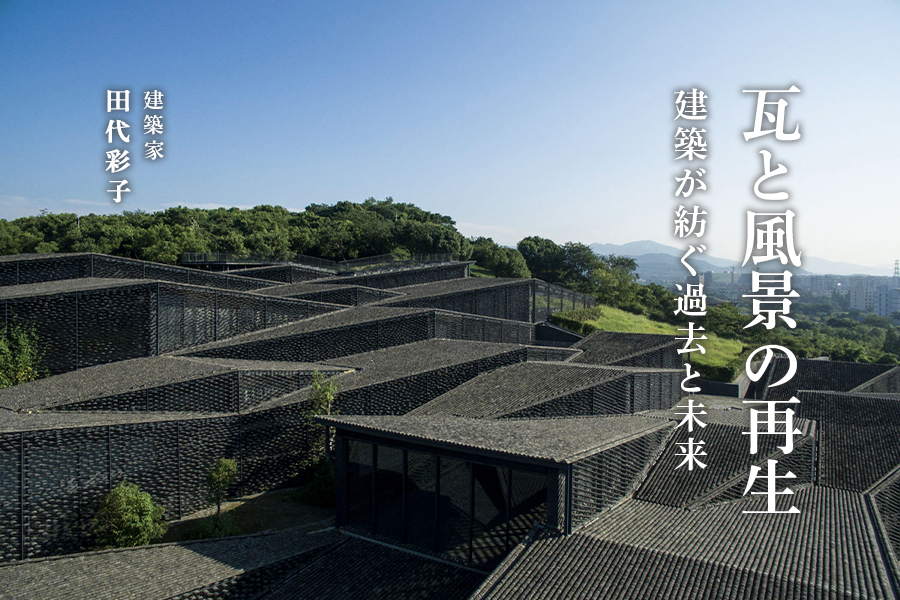「協働の輪郭 | Group Form」(GROUP)
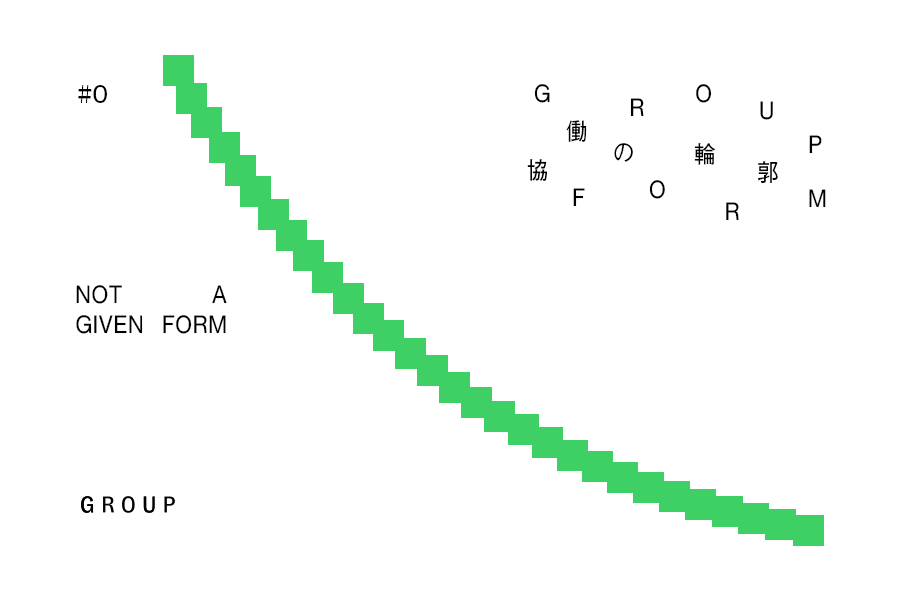
第0回「あらかじめ与えられたかたちではなく」
建築をつくることは、いつも協働のなかから始まる。けれど、協働は決して容易なものではない。少しの認識のズレや意見の違いが口論を生み、物事の決定には多くの時間を要する。建築における協働の輪郭は、どのように描きうるのか。私たちは本連載「協働の輪郭」を通して、建築の制作プロセスだけでなく、社会や自然と、分断を超えて関わり直すための方法を探る。
建築家の起源は、ルネサンス期にある。設計者が施工者の立場から自らを切り離し、役割を分有したことが、その始まりだと言われている。それから500年以上が経過した現在、設計者は自律性を保つために、しばしば役割を純粋化し、視覚的な表現や図面というかたちで設計行為を単純化してきた。とくにメディア環境が加速度的に発達した近年においては、建築家の仕事は「見せること」に最適化され、プロセスの複雑さや関係性の厚みは見えにくくなっている。これらの合理化の過程で、建築における「協働」の実態は語られにくくなり、しばしば背景へと押しやられてきた。
武邑光裕は『プライバシー・パラドックス』のなかで、「私たちはサイバーパンクの未来に加速されているのではなく、空想的で魔術的な前近代の過去に放り込まれている」と述べている。合理化の進行に加えて、現代はフェイクとファクトの境界も曖昧になっている。そうした状況下では、言葉や視覚のスペクタクルが前面に押し出され、協働の営みは、ますますその陰に隠れていく。
いま求められているのは、合理化と曖昧さが交錯する現実のなかで、他者との関係性を編み直す視点である。ただし、その「他者」とは、エドワード・サイードが批判したような、自己を語るための装置として動員されるものではない。私たちがこの連載で探ろうとしている他者とは、役割を固定せず、共に創造していく存在である。そうした他者との関係は、時に衝突を孕みつつも、建築の枠組みそのものを揺るがす可能性がある。それは、建築の協働のなかに生まれる、揺れ動く関係そのものである。
この連載では、私たちGROUPがこれまで共に仕事をしてきた人々にインタビューを行い、建築の実践を通してかたちづくられてきた協働の具体的な関係を記録していく。協働の実践を言語化し、その「輪郭」を浮かび上がらせることで、建築という営みそのものの構造をあらためて捉え直したいと考えている。
インタビューの相手は、家具作家、グラフィックデザイナー、金属加工職人、木工職人、インストーラー、写真家、劇作家、アーティスト、キュレーター、そして海外の建築家たち。さまざまな分野の専門性と視点に触れながら、建築という協働の現場に新たなかたちを与えていく。たとえば家具作家との協働では、彼らが提案した形や色が、設計の輪郭そのものを揺さぶることもあった。グラフィックデザイナーとの協働でも、サインのデザインを端緒に、什器と空間の関係性や書籍タイトルといったものまで再考されるということがあった。
協働には設計、施工、利用、維持という建築をめぐる固定された関係を再構成する可能性がある。設計図がまず先にあり、それに従うように施工監理を行うのではなく、現場での協働のなかから立ち上がってきた形を、後から書き写すようにして設計図が出来上がっていく。それは、あらかじめ決定された図面ではなく、協働のやりとりを経て現れる、変化の記録となる。
一連のインタビューを通じて、私たちは「協働の輪郭」を描き出す。それは現時点で私たちの考えている形にはならないかもしれないが、その形をなぞりながら眺めることが、これからの社会や自然との関わり方の補助線となることを期待している。
GROUP
協働の輪郭 | Group Form
Vol. 0: “Not a Given Form”
The act of creating architecture always begins within collaboration. Yet collaboration is never simple. Even a slight difference in perception or opinion can lead to argument, and decisions often take considerable time. How can we draw the contours of collaboration in architecture? Through this series, Contours of Collaboration, we aim to explore not only architectural production processes, but also ways to reconnect with society and nature beyond fragmentation.
The figure of the architect originated in the Renaissance, when the designer separated from the builder and the roles became distinct. Over five hundred years later, in an effort to preserve autonomy, designers have often sought to purify their role—simplifying the act of design into visual expressions and drawings. Especially in recent years, as media environments have rapidly advanced, the architect’s work has become optimized for visibility, making the complexity of process and the depth of relationships increasingly difficult to perceive. Within this push for rationalization, the reality of “collaboration” in architecture has become harder to articulate, often pushed into the background.
In The Privacy Paradox, Mitsuhiro Takemura writes that “we are not being accelerated into a cyberpunk future, but instead thrown into an imaginary, magical, premodern past.” Alongside this rationalization, we now face a blurred boundary between fake and fact. In such a condition, spectacle—of language and vision—dominates, and the labor of collaboration fades further into obscurity.
What is needed now is a perspective that rewrites relationships with others within a reality where rationality and ambiguity intersect. Yet the “others” we refer to are not those mobilized as devices for self-narration, as Edward Said critically pointed out. The others we seek in this series are those who do not occupy fixed roles, but who co-create with us. These relationships, while sometimes marked by conflict, have the power to unsettle the very framework of architecture. They are not incidental, but are the shifting relationships born within architectural collaboration itself.
In this series, we at GROUP will interview those we’ve worked with—furniture makers, graphic designers, metalworkers, carpenters, installers, photographers, playwrights, artists, curators, and architects from abroad. By recording the specific relationships formed through architectural practice, we hope to give shape to the contours of collaboration. By putting these practices into language, we aim to rethink the very structure of architecture as an activity.
In collaborating with furniture makers, for example, the forms and colors they proposed sometimes shook the outline of the design itself. With graphic designers, signage design sparked a rethinking of not just fixtures and spatial relations, but also book titles and naming itself.
Collaboration holds the potential to reconfigure the fixed relationships of design, construction, use, and maintenance. Rather than design drawings coming first and construction supervision merely following them, drawings emerge afterward—traced from the forms that arise through collaboration on site. These are not predetermined diagrams, but records of change shaped through exchange.
Through these interviews, we will attempt to draw the “contours of collaboration.” The form may not yet resemble what we imagine, but by tracing its outline, we hope to offer reference lines for how we might relate anew to society and nature.
GROUP
